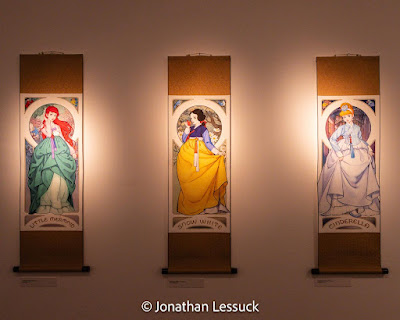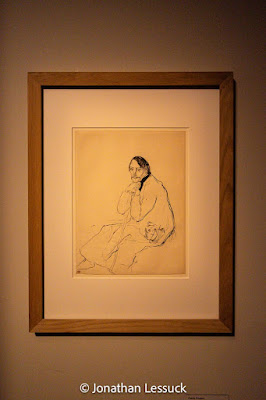 |
| Ara Pacis |
One of my favorite things to do when I travel is to find smaller museums to visit. I find that they offer wonderful shows of artists that I probably wouldn’t encounter in other spaces. On my visit to Rome this spring I found three great small museums.
Instituto Culturale Coreano (Korean Cultural Institute)
This small exhibit space is dedicated to promoting the language and culture of Korea in Italy. What drew me was a poster I had seen while taking the subway in Rome. Western Fairy Tales in Hanbok was a show of art created by Wooh Nayoung, a Korean illustrator. Ms. Wooh interprets modern western cultural icons in the anime style and wearing hanbok, traditional Korean clothes. From Alice in Wonderland to Marvel Comics to Disney, Ms. Wooh offers a new view on some classic characters.
 |
| Tradional Korean Home |
 |
| Snow White |
 |
| Disney Villans |
 |
| The Little Mermaid, Snow White, Cinderella |
 |
| Disney Princesses |
In 13 BCE Emperor Augustus Caesar returned to Rome from conquering Gaul and Spain. He and the Roman Senate decided to create and Altar to Peace (Ara Pacis) so that a sacrifice could be made every year to commemorate the victories. The altar was finished in 9 BCE, but was in an area where the Tiber River regularly flooded, and over the centuries, it was buried under 4 m (12 ft) of silt and mud. Pieces of the altar were discovered in the 16th century,
but it was not until the early 1900’s that the site was recognized. In
1937, to honor the 2000th anniversary of the birth of Augustus Caesar,
the altar was excavated. The Altar of Peace was reconstructed and placed
on the shore of the Tiber, inside a protective structure built near the
Mausoleum of Augustus. In 2006 a new modern structure was built on the
site. It offers large windows that provide natural light for the altar,
with a large museum space on its lower level.




The museum had a show of works by Franco Fontana (b. 1933). Mr. Fontana is a photographer known for creating works of bright, vibrant colors. He uses nature, buildings and people to make art that bridges photography and abstract painting.
 |
| Havana 2017 |
 |
| Tokio 1983 |
 |
| Los Angeles 1990 |
 |
| Paesaggio Immaginario 1995 |
 |
| Puglia 1978 |
 |
| Neve, Emilia 1990 |
 |
| Riccione 1965 |
 |
| Italia 1968 |
Museo del Corso
The Museo del Corso was created by the Fondazione Roma to offer a museum that ties together the city’s history along with cultural exhibits. It is housed in two palazzos along the Via del Corso. The Piazza Sciarra Colonna Carbognano houses the museum’s historic and permanent collections along with an archive of two Roman financial institutions that date back to the 16th century.
 |
| Reclining Nude with Figures |
 |
| Mother and Child |
 |
| Seated Man with Cane and Mask |
 |
| The Adolescent |
My visit was to Palazzo Cupola, the museum’s exhibition space. On display was “Picasso lo Straniero” (Picasso the foreigner). The focus was on the fact that Pablo Picasso (1881-1973) moved to Paris in 1904, and stayed in France for the rest of his life, without ever becoming a citizen of the country. Through his artwork, photographs and newspaper stories, it explores the way that being a “foreigner” in a place that he made his home for decades might have affected his work.
 |
| Scarf Dove of Peace |
 |
| Sleeping Woman with Shutters |
 |
| The Kiss |
 |
| Woman Throwing Stone |
Nuts and Bolts
- Instituto Culturale Coreano - Via Nomentana 12. Open Mon - Fri 10:00 AM - 6:00 PM. Admission is free,
- Museo dell’Arte Pacis - Lungotevere in Augusta. Open every day 9:30 AM - 7:30 PM. Entrance fee for the altar and the exhibition space is €21 Adults/ €15 for a long list of discounts.
- Palazzo Cipolla - Via del Corso 320 Open Tue - Sun 10:00 AM - 8:00 PM €15

































Extremely informative and interesting Johnathan.
ReplyDeleteExtremely informative and interesting.
ReplyDelete